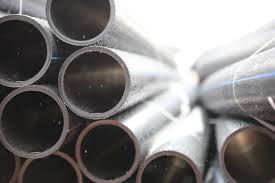Dec . 06, 2024 16:43 Back to list
ppr hot water pipe insulation manufacturer
PPR Hot Water Pipe Insulation A Comprehensive Guide for Manufacturers
When it comes to plumbing and piping systems, ensuring the right insulation for hot water pipes is crucial. Polypropylene Random Copolymer (PPR) has gained immense popularity as a material choice for hot water pipes due to its durability, flexibility, and resistance to temperature and pressure. However, to optimize the functionality of PPR pipes, effective insulation is necessary. In this article, we will explore the significance of PPR hot water pipe insulation and discuss key considerations for manufacturers in this field.
Importance of Insulation
Insulation serves a pivotal role in maintaining the efficiency of hot water systems. By minimizing heat loss, properly insulated hot water pipes can ensure consistent water temperatures, leading to energy savings and reduced operational costs. Additionally, insulation helps to prevent condensation, which can lead to water damage and promote mold growth in buildings. Therefore, the demand for high-quality insulation solutions in PPR hot water pipe systems is on the rise.
Types of Insulation Materials
Manufacturers of PPR pipe insulation typically choose from a variety of materials, each offering distinct advantages. Common insulation materials include polyethylene foam, fiberglass, rubber, and polyurethane. Each type has its own thermal resistance, moisture management properties, and installation characteristics.
- Polyethylene Foam This lightweight and cost-effective option offers excellent thermal insulation properties and is easy to install. Its closed-cell structure helps to minimize moisture absorption while maintaining flexibility. - Fiberglass Known for its high-temperature tolerance, fiberglass insulation is often used in industrial applications. It is available in different thicknesses and densities, making it suitable for various temperature ranges. However, it requires careful handling due to its potential irritation to skin and respiratory systems during installation.
- Rubber Another popular choice, rubber insulation provides good thermal performance, is easy to install, and is resistant to moisture and mold. Its elasticity allows it to conform to the pipe's shape, ensuring comprehensive coverage.
- Polyurethane Offering the highest thermal resistance, polyurethane insulation is ideal for high-performance applications. It is typically used in more demanding industrial environments.
ppr hot water pipe insulation manufacturer

Key Considerations for Manufacturers
For manufacturers specializing in PPR hot water pipe insulation, several key factors should be considered to ensure product quality and customer satisfaction.
1. Thermal Performance The primary function of insulation is to provide effective thermal resistance. Manufacturers should conduct thorough testing to ensure that their insulation products meet or exceed industry standards for thermal performance.
2. Moisture Resistance Given the potential for condensation, moisture resistance is an essential property of hot water pipe insulation. Manufacturers should focus on developing materials that resist moisture absorption and mitigate potential mold growth.
3. Environmental Impact In today's eco-conscious market, sustainability is a key consideration. Manufacturers should explore recyclable materials and processes that minimize environmental impact, aligning their products with green building standards.
4. Installation Ease Insulation materials that are easy to cut and install can increase user satisfaction and lower labor costs. Manufacturers should prioritize designs that facilitate efficient and safe installation by professional plumbers.
5. Compliance with Regulations It is essential for manufacturers to stay informed about local regulations and codes concerning piping and insulation materials. Compliance not only ensures safety but can also enhance marketability.
Conclusion
As the demand for energy-efficient solutions grows, PPR hot water pipe insulation presents an opportunity for manufacturers to innovate and cater to diverse market needs. By focusing on thermal performance, moisture resistance, environmental sustainability, ease of installation, and regulatory compliance, manufacturers can position themselves as leaders in the piping industry. Investing in the development of high-quality insulation products will not only contribute to operational efficiency but also play a significant role in promoting sustainable practices within the construction and plumbing sectors. As we move towards a more energy-conscious future, the role of reliable insulation solutions will be more critical than ever.
-
High-Quality PVC Borehole Pipes Durable & Versatile Pipe Solutions
NewsJul.08,2025
-
High-Quality PVC Perforated Pipes for Efficient Drainage Leading Manufacturers & Factories
NewsJul.08,2025
-
High-Quality PVC Borehole Pipes Durable Pipe Solutions by Leading Manufacturer
NewsJul.08,2025
-
High-Quality PVC Borehole Pipes Reliable PVC Pipe Manufacturer Solutions
NewsJul.07,2025
-
High-Quality UPVC Drain Pipes Durable HDPE & Drain Pipe Solutions
NewsJul.07,2025
-
High-Quality Conduit Pipes & HDPE Conduit Fittings Manufacturer Reliable Factory Supply
NewsJul.06,2025

